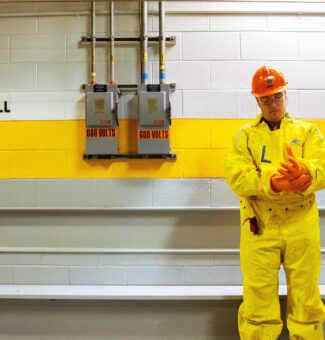Understanding the unseen
It can be complicated to understand the benefits and effects of radiation.
To better understand radiation and its relationship with nuclear generating facilities it’s important to first learn what it is and the importance Ontario Power Generation (OPG) places on safety, stewardship, and community protection.
Learn more about radiation and explore OPG’s track record of radiation safety.
Radiation – it’s all around us
0.3 mSv
Cosmic rays
0.23 mSv
Ground
0.01 mSv
Dental x-ray
0.02 mSv
Cross Canada flight
A history of safety
In more than 45 years of operating our facilities, no member of the public has ever been harmed from OPG’s nuclear operations. In addition, we have never exceeded regulatory limits on radioactive releases into the environment. Emissions do occur during normal operations however, the multiple technological and operational safety measures our facilities have in place ensure any release is extremely small when compared to the heavily mandated regulatory limits.
Minimizing our impact on the environment
One of our top priorities is to safely operate our facilities in a manner that minimizes impact on the environment.
We work closely with local conservation authorities, the Durham Regional Health Department, the Ministry of the Environment, Conservation and Parks, the Ministry of Natural Resources and Forestry, and the Canadian Nuclear Safety Commission, to ensure the environment is not adversely affected by our operations. All of these agencies provide oversight to Durham’s nuclear plant operations. As well, OPG publicly reports its emission rates four times each year.
Subscribe and stay informed
Sign up to receive the latest news, project updates, and event information from OPG.



